Welcome to the enchanting world of La Gomera Volcano, a hidden gem among the Spanish Canary Islands. This stunning island is known for its ancient forests, vertical cliffs, and small crystalline coves with volcanic sand, offering visitors a truly unique experience. Whether you’re diving into the azure depths of the ocean or hiking through its volcanic landscapes, La Gomera provides endless opportunities for adventure and exploration.
Key Takeaways:
- La Gomera is a hidden gem known for its ancient forests and vertiginous cliffs.
- The island offers activities such as diving and hiking, catering to adventure-seekers.
- La Gomera has a warm climate, making it a year-round destination.
- The island is home to the Garajonay National Park, a UNESCO World Heritage Site.
- La Gomera features the fascinating whistling language of El Silbo, used by the indigenous Guanches.
Exploring La Gomera’s Volcanic Landscape
As I embark on my journey to La Gomera, I am captivated by its fascinating volcanic landscape and the allure it holds for volcanic enthusiasts from around the world. This Spanish Canary Island is a haven for those seeking to explore the geology of La Gomera and indulge in volcanic tourism.
The Canary Islands are renowned for their volcanic wonders, and La Gomera stands out with its unique geological formations. The island’s landscape is shaped by ancient volcanic activity, leaving behind dramatic cliffs, deep ravines, and rugged mountains. The contrast between the black volcanic terrain and the lush vegetation is truly mesmerizing.
Volcanic tourism in La Gomera offers visitors a chance to delve into the island’s intriguing past and understand its geological significance. Whether it’s hiking along volcanic trails, exploring volcanic rock formations, or marveling at the panoramic views from the island’s highest peaks, there is something for every adventurous traveler.
| Activities | Highlights |
|---|---|
| Diving | Discover underwater volcanic formations and colorful marine life. |
| Hiking | Explore volcanic trails and witness breathtaking views of the island. |
| Volcanic Rock Formations | Admire unique volcanic formations, such as Roque Agando and Los Órganos. |
La Gomera’s volcanic landscape is a playground for nature lovers and adventure seekers alike. Whether you’re fascinated by geology or simply drawn to the raw beauty of volcanic terrain, this hidden gem in the Canary Islands promises an unforgettable experience.
Exploring La Gomera’s Volcanic Landscape
La Gomera’s volcanic landscape offers numerous opportunities for adventure and discovery. From the Garajonay National Park, a UNESCO World Heritage Site, to the charming town of Agulo, there are endless wonders waiting to be explored.
“The contrast between the black volcanic terrain and the lush vegetation is truly mesmerizing.”
- Discover the unique geology of La Gomera
- Embark on thrilling hiking trails to witness volcanic formations
- Dive into the underwater world of volcanic wonders
- Marvel at panoramic views from the island’s highest peaks
La Gomera’s volcanic landscape is a testament to the Earth’s ever-evolving nature and a reminder of the power of nature. It is a destination that effortlessly combines adventure, natural beauty, and a rich cultural heritage, making it an ideal choice for travelers seeking a truly unique experience.
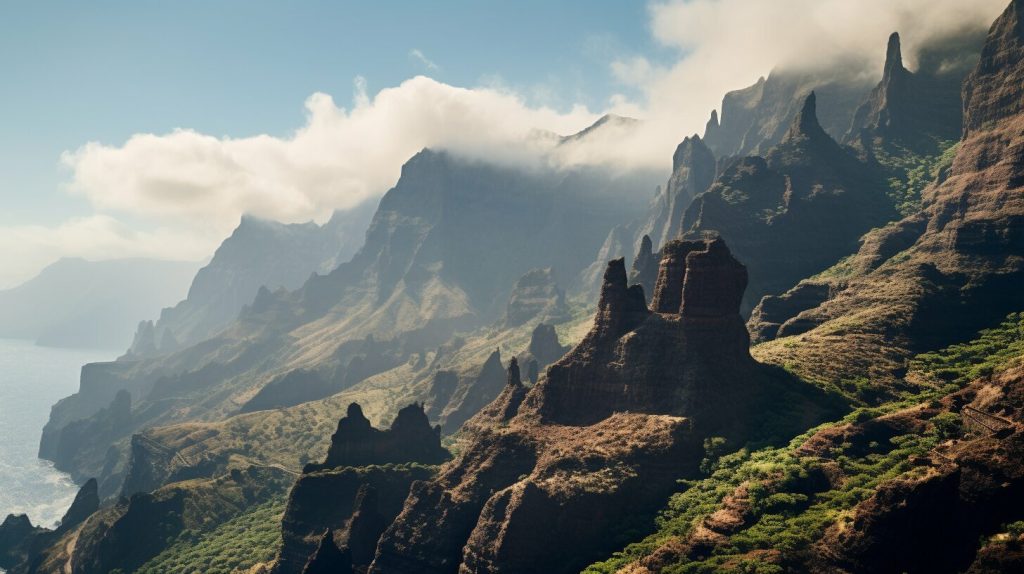
Standing on the slopes of the active volcano in La Gomera, I am in awe of the sheer power and dynamism that lies beneath the surface. This volcanic wonder is a testament to the island’s vibrant geological history and ongoing activity. La Gomera, often overshadowed by its more prominent Canary Island neighbors, boasts a hidden gem in the form of its active volcano.
The volcano in La Gomera is not only a sight to behold but also a fascinating subject for scientists and adventurers alike. Its volcanic activity adds an intriguing element to the island’s already stunning landscape. From the towering cliffs to the crystalline coves of volcanic sand, every corner of La Gomera tells a captivating story of geological forces at work.
With ongoing volcanic activity, the island offers a unique opportunity for visitors to witness the raw power of nature. However, it’s essential to be aware of the potential hazards associated with an active volcano. As I explore the volcano’s surroundings, the smell of sulfur wafts through the air, a reminder of the volatile nature of this extraordinary phenomenon.
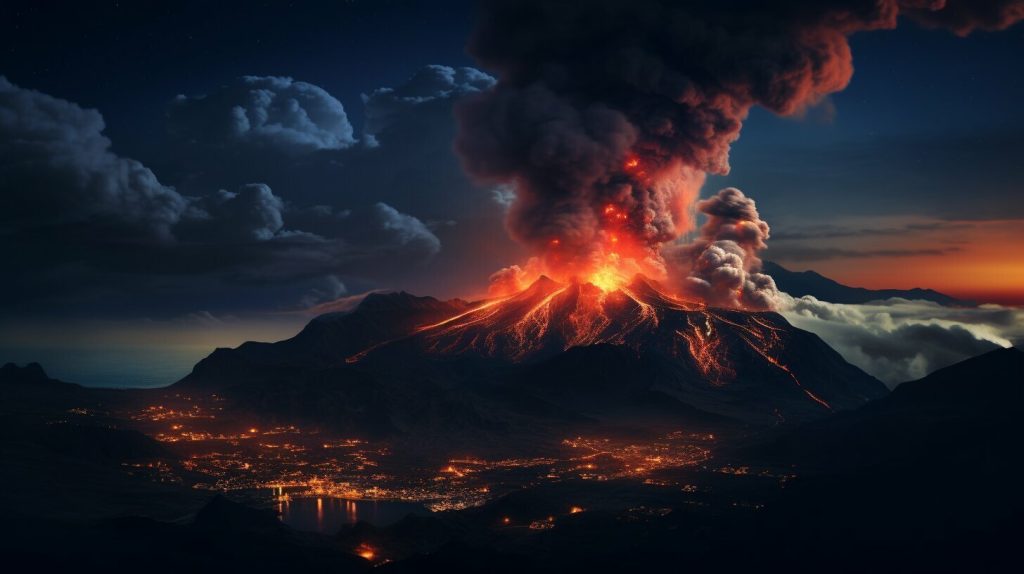
Despite its inherent danger, the active volcano in La Gomera serves as a reminder of our planet’s dynamic nature and the constant evolution happening just beneath our feet. It is a testament to the resilience of life, as flora and fauna manage to thrive amidst the volcanic activity.
Volcanic Hazards in La Gomera
| Volcanic Hazard | Description |
|---|---|
| Pyroclastic Flows | Glowing avalanches of hot ash, rocks, and gas that can travel at high speeds down the volcano’s slopes. |
| Volcanic Ashfall | Fine particles of fragmented lava and rock ejected during volcanic eruptions that can disrupt air travel and pose respiratory risks. |
| Lahars | Mudflows consisting of water-saturated volcanic material that can be triggered by heavy rainfall on ash-covered slopes. |
| Gas Emissions | Release of toxic gases, such as sulfur dioxide, that can pose health risks to humans and animals. |
Exploring the active volcano in La Gomera is an exhilarating experience, but it’s crucial to prioritize safety and adhere to any warnings or guidelines provided by local authorities. With proper precautions, witnessing the volcanic activity up close can leave visitors with a profound appreciation for the earth’s raw power and the beauty that emerges from the volcanic landscape.
The Mysterious Beauty of La Gomera’s Volcanic Eruptions
Let me take you back in time to the dramatic volcanic eruptions that have shaped La Gomera’s landscape and left behind a legacy of wonder and beauty. This Spanish Canary Island has been molded by the remarkable forces of nature, resulting in a mesmerizing volcanic terrain that captivates all who visit.
La Gomera’s volcanic eruptions have created a landscape that is both awe-inspiring and hauntingly beautiful. The island’s rugged cliffs, deep gorges, and ancient forests bear witness to the immense power that once unleashed torrents of molten lava and ash across the land. These eruptions have shaped the island’s unique topography and have given rise to its stunning geological features.
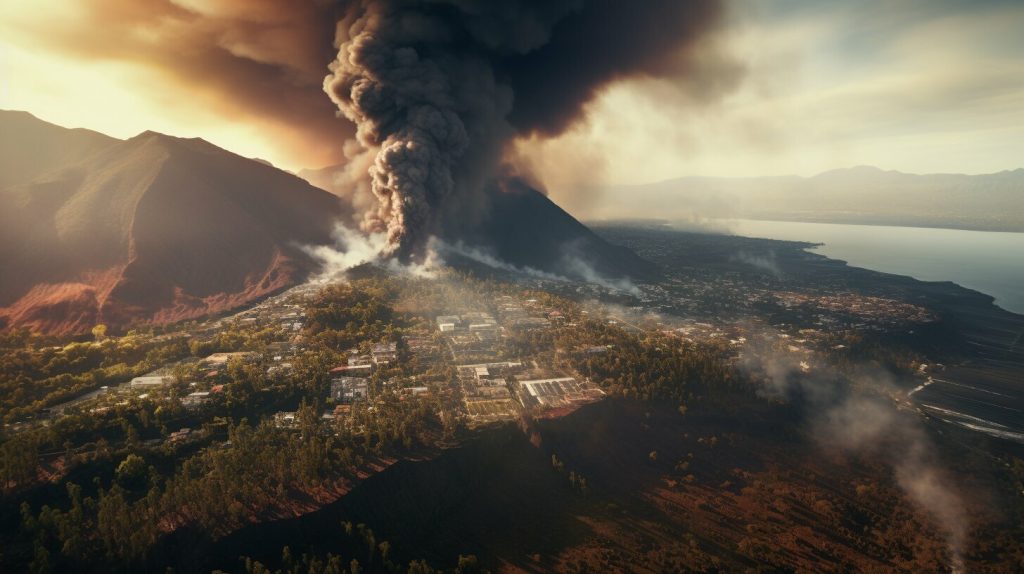
The legacy of La Gomera’s volcanic eruptions can be seen in the diverse rock formations and striking colors that adorn the island. From the dark shades of volcanic ash to the vibrant hues of volcanic rocks, the landscape is a testament to the fiery origins of La Gomera. It is a place where nature’s artistry is on full display, inviting exploration and contemplation.
Uncovering the Stories of La Gomera’s Volcanic Past
Each volcanic eruption in La Gomera’s history tells a unique story, unveiling the island’s dramatic past. The layers of hardened lava and volcanic ash reveal the ebb and flow of volcanic activity, providing scientists with insights into the island’s geological evolution. Today, visitors can marvel at the remnants of these eruptions, immersing themselves in the history and beauty of La Gomera.
As we explore La Gomera’s volcanic landscape, we discover a realm where nature’s raw power and sublime beauty converge. From the sheer cliffs of Los Organos to the lush forests of Garajonay National Park, the island offers a breathtaking tapestry of volcanic wonders. La Gomera’s volcanic eruptions have left an indelible mark on the island, carving out a place that is truly extraordinary.
| Eruptions | Date |
|---|---|
| El Acebuche | 1489 |
| Las Playas | 1611 |
| San Juan | 1936 |
| El Cabezo | 1949 |
“The volcanic eruptions in La Gomera have shaped a landscape of extraordinary beauty, where nature’s wonders are showcased in every rock and crevice.” – Dr. Maria Rodriguez, Volcanologist
La Gomera’s volcanic eruptions continue to shape the island’s ever-evolving landscape. While the fiery displays may be absent today, the legacy of these eruptions lives on, creating a natural masterpiece that beckons adventurers and nature enthusiasts alike. Unveiling the hidden gem of La Gomera Volcano offers a glimpse into the powerful forces that have shaped and continue to shape our planet.
| Significant Volcanic Features | Location |
|---|---|
| Los Organos | Valle Gran Rey |
| Garajonay National Park | San Sebastian de La Gomera |
| Roque de Agando | Alajero |
| Playa de Santiago | Alajero |
Garajonay National Park: A UNESCO World Heritage Site
Within the heart of La Gomera lies the extraordinary Garajonay National Park, a haven for biodiversity and a testament to the island’s natural wonders. This UNESCO World Heritage Site encompasses a unique laurel rainforest that has thrived on the island for thousands of years. The park’s lush greenery, ancient trees, and vibrant wildlife make it a truly exceptional destination for nature enthusiasts and adventurers alike.
The Garajonay National Park is home to a wide variety of flora and fauna, some of which can only be found within its boundaries. From towering ferns and moss-covered rocks to colorful orchids and exotic bird species, the park is a treasure trove of natural beauty. Walking through its trails feels like stepping back in time, surrounded by the sights and sounds of a primal forest that has remained untouched by human intervention.
“Walking through the Garajonay National Park feels like stepping back in time, surrounded by the sights and sounds of a primal forest.”
The park offers a range of activities for visitors to immerse themselves in its stunning scenery. Hiking trails crisscross the park, leading to breathtaking viewpoints where you can marvel at the sheer majesty of the landscape. Picnic areas are scattered throughout the park, providing a perfect spot to relax and enjoy the tranquility of nature. Guided tours and interpretive exhibitions offer valuable insights into the park’s ecosystem, ensuring a deeper appreciation for its ecological significance.
| Key Features of Garajonay National Park: | Natural Wonders: |
|---|---|
| Laurel Rainforest | Endemic Flora |
| Biodiversity | Rare Bird Species |
| Hiking Trails | Picnic Areas |
Whether you’re a nature lover, an avid hiker, or simply seeking a peaceful retreat in the heart of nature, Garajonay National Park is a must-visit destination. Its untouched beauty and rich biodiversity offer a glimpse into the island’s ancient past, providing an unforgettable experience for all who venture into its depths.
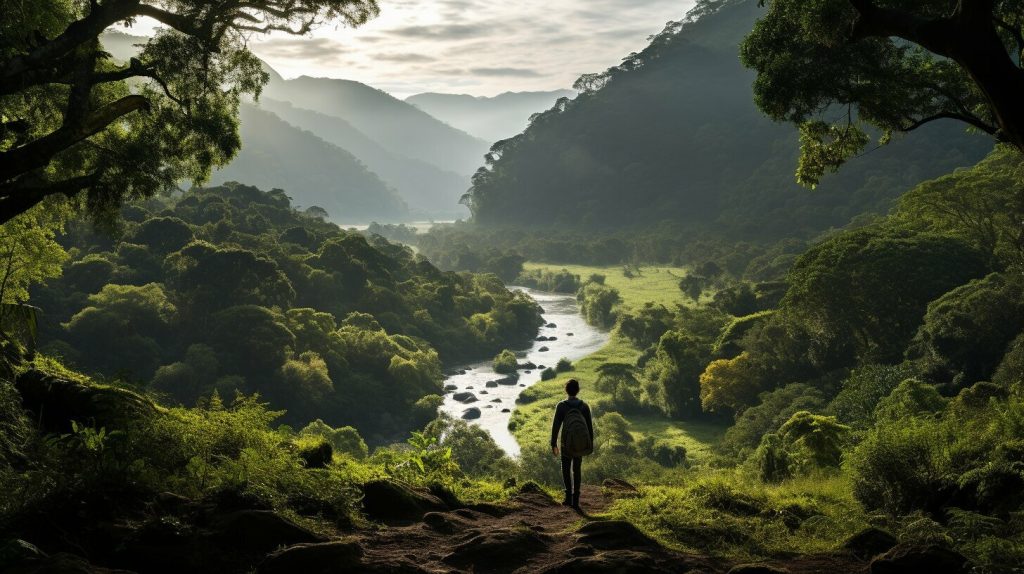
A melodic symphony fills the air as I discover the ancient whistling language of El Silbo, a cultural treasure that echoes through the deep valleys of La Gomera. This unique form of communication has been passed down through generations, preserving the island’s rich history and traditions.
The whistling language of El Silbo was developed by the indigenous Guanches as a way to communicate across the rugged terrain and deep gorges of La Gomera. It is a complex system of whistles that represents the spoken language, allowing messages to be transmitted over long distances with remarkable clarity.
As I listen to the enchanting melodies of El Silbo, I am amazed by the precision and beauty of this ancient language. It is a testament to the resilience and ingenuity of the people of La Gomera, who have preserved this cultural heritage for centuries.
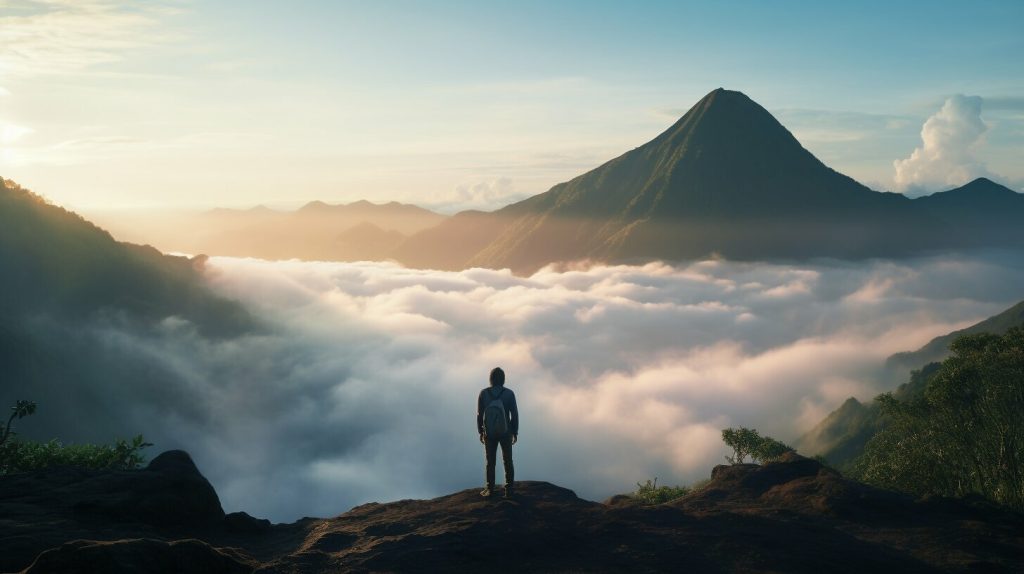
Exploring the island, I encounter locals who still practice El Silbo, using it in everyday conversations and celebrations. It is a living testament to the close-knit community and strong cultural identity of La Gomera.
| Key Features of El Silbo | Importance |
|---|---|
| Whistling melodies | Allows communication across long distances |
| Precise transcription of spoken language | Maintains linguistic nuances |
| Preservation of cultural heritage | Connects present-day Gomerans to their ancestors |
As the echoes of El Silbo fade away, I am left with a profound appreciation for the rich tapestry of La Gomera’s cultural heritage. The whistling language is not only a fascinating linguistic phenomenon but also a symbol of the island’s identity and sense of community.
The Pristine Ecosystem of La Gomera
Venturing into the untouched wilderness of La Gomera, I am astounded by the abundance of prehistoric vegetation that paints a vibrant tapestry across the island. This hidden gem in the Spanish Canary Islands boasts an ecosystem like no other, with ancient forests and unique flora that have flourished here for centuries.
As I hike through the winding trails of the Garajonay National Park, a UNESCO World Heritage Site, I am surrounded by towering laurel trees and lush undergrowth. The air is filled with the sweet scent of moss and damp earth, creating an enchanting atmosphere that transports me back in time.
The park itself is a testament to the island’s rich natural heritage. With its dense forests, deep ravines, and mist-shrouded peaks, it is a haven for biodiversity. Here, I encounter rare plant species that can only be found on La Gomera, such as the Canarian dragon tree and the Gomera giant lizard, adding to the island’s allure as a botanical paradise.
Exploring La Gomera’s pristine ecosystem is like stepping into a prehistoric world, where time seems to stand still. The island’s volcanic origins have gifted it with unique geological features and fertile soil, allowing for the flourishing of this remarkable vegetation. It truly is a paradise for nature lovers, providing a glimpse into a world that existed long before our time.
| Key Features of La Gomera’s Pristine Ecosystem |
|---|
| Ancient forests with towering laurel trees |
| Unique flora and fauna, including rare plant species |
| Diverse landscapes of deep ravines and mist-shrouded peaks |
| Fertile soil nurtured by the island’s volcanic origins |
| A glimpse into a prehistoric world |
La Gomera’s pristine ecosystem is a treasure to be cherished and protected. It serves as a reminder of the incredible diversity and resilience of our natural world. So, as you plan your next adventure, consider venturing off the beaten path and discovering the wonders of La Gomera’s prehistoric vegetation. You won’t be disappointed.
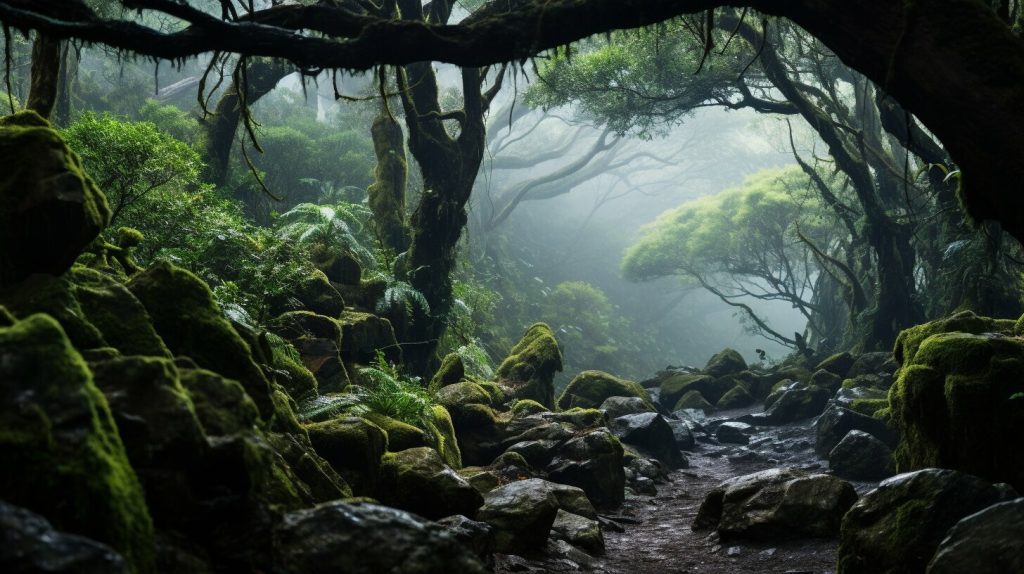
As I make my way to the picturesque town of Agulo, I am greeted by panoramic vistas that stretch across the azure waters, with Tenerife standing majestically in the distance. Nestled in the northern part of La Gomera, Agulo is a true gem that offers breathtaking views and a serene atmosphere. With its charming cobblestone streets, traditional whitewashed houses, and vibrant flowers adorning every corner, Agulo captures the essence of a postcard-perfect Spanish town.
One of the highlights of Agulo is its location, nestled in the shadow of Tenerife. This proximity to the largest of the Canary Islands allows visitors to enjoy stunning views of the neighboring island, complete with its iconic volcanic landscape and the towering peak of Mount Teide, Spain’s highest mountain. Whether you choose to admire the view from one of the town’s quaint cafés or take a leisurely stroll along the promenade, the sight is sure to leave you in awe.
Agulo’s rich history is also worth exploring. The town dates back to the 17th century and is steeped in stories of seafaring adventures and rugged island life. Walking through its narrow streets, you can visit historical landmarks such as the Church of San Marcos, a beautiful example of Baroque architecture, and the Ethnographic Museum, which provides a glimpse into the island’s traditional way of life.
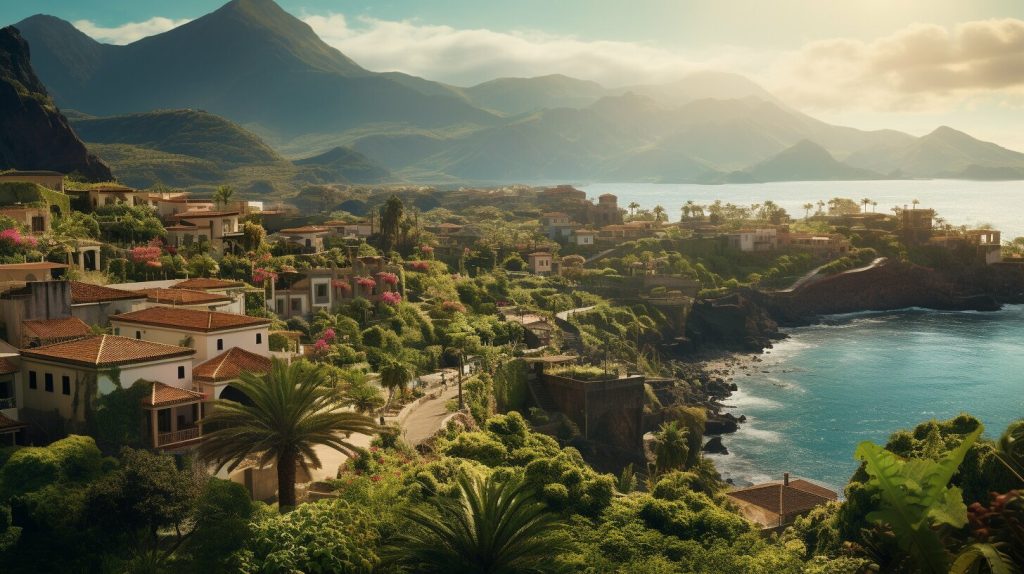
When it comes to gastronomy, Agulo does not disappoint. The town is home to a variety of traditional Canarian restaurants where you can savor local delicacies such as almogrote, a delicious spread made from cheese, garlic, and pepper, or fresh seafood caught daily from the surrounding waters. Pair your meal with a glass of locally produced wine, and you have the perfect recipe for a delightful culinary experience.
In conclusion, Agulo is a hidden treasure in La Gomera, offering visitors a glimpse into the authentic charm of the Canary Islands. With its breathtaking views, rich history, and gastronomic delights, this picturesque town is a must-visit destination for those seeking a tranquil escape in the shadow of Tenerife. So pack your bags, embrace the warm climate, and get ready to immerse yourself in the beauty of Agulo.
Adventure and Hiking in La Gomera’s Volcanic Beauty.
Lace up your hiking boots and join me on an unforgettable adventure through La Gomera’s volcanic wonderland, where each step unveils a breathtaking vista and an exhilarating experience. This hidden gem among the Spanish Canary Islands is a paradise for nature lovers and adventure seekers alike. With its ancient forests, towering cliffs, and secluded volcanic sand coves, La Gomera offers a diverse range of landscapes to explore.
As you traverse the island’s volcanic terrain, you’ll be immersed in the island’s unique geology. The rugged trails and winding paths will lead you through dramatic valleys and up to panoramic viewpoints that showcase the island’s volcanic origins. Be prepared to encounter stunning rock formations, cascading waterfalls, and vibrant flora that thrives in the fertile volcanic soil.
For those seeking a more thrilling experience, La Gomera offers adrenaline-pumping activities such as rock climbing and canyoning. Challenge yourself to conquer the island’s vertical cliffs and plunge into crystal-clear natural pools as you navigate through the island’s rugged canyons. Each adventure is an opportunity to push your limits and create memories that will last a lifetime.
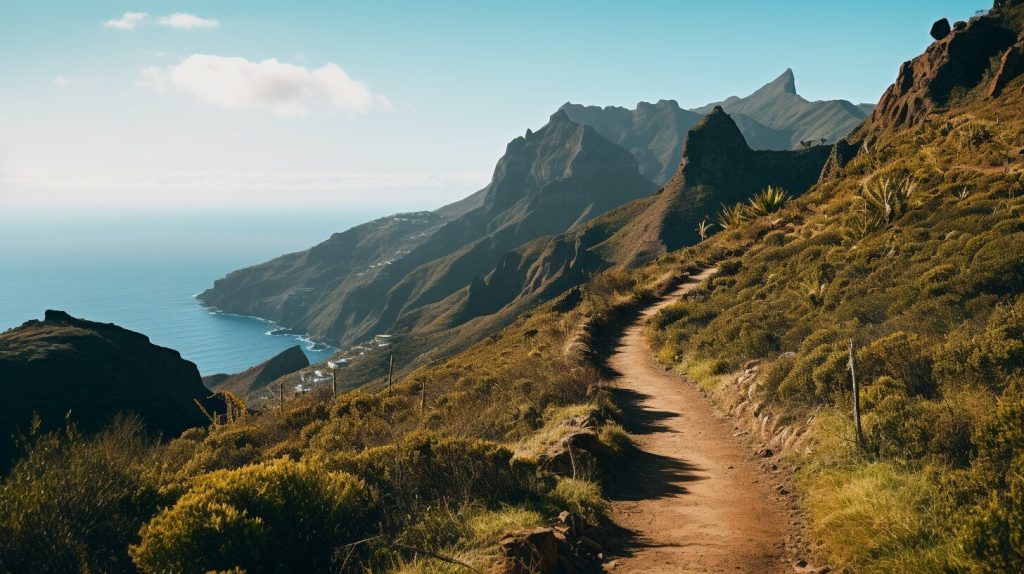
After a day of exploration and adventure, unwind in the captivating natural beauty that surrounds you. As the sun sets over the volcanic landscape, take a moment to appreciate the tranquility and serenity of La Gomera. Let the soothing sounds of nature and the gentle ocean breeze wash away any remnants of stress or fatigue.
So, whether you’re an avid hiker or a thrill-seeker looking for your next adventure, La Gomera’s volcanic beauty awaits. Lace up your boots, pack your sense of adventure, and embark on a journey through this Spanish island’s hidden gem. The wonders of La Gomera are ready to be discovered.
La Gomera’s Pleasant Climate and Year-Round Appeal
With its gentle temperatures and welcoming embrace, La Gomera beckons outdoor enthusiasts and sun-seekers to experience the best of the Canary Islands’ volcanic splendor. Nestled among the Spanish Canary Islands, La Gomera is a hidden gem boasting a unique blend of ancient forests, dramatic cliffs, and secluded coves with volcanic sand.
Home to the Garajonay National Park, a UNESCO World Heritage Site, La Gomera showcases its extraordinary laurel rainforest, a testament to its rich biodiversity. This lush sanctuary is a haven for nature lovers and hikers alike, offering captivating trails that wind through towering trees and reveal breathtaking panoramic views of the island’s volcanic landscape.
Aside from its natural wonders, La Gomera is steeped in fascinating history. The island is famous for its connection to Christopher Columbus, who made a stop here during his voyage to the Indies. La Gomera’s intriguing past also includes the indigenous Guanches, who communicated across deep gorges using a unique whistling language known as El Silbo.
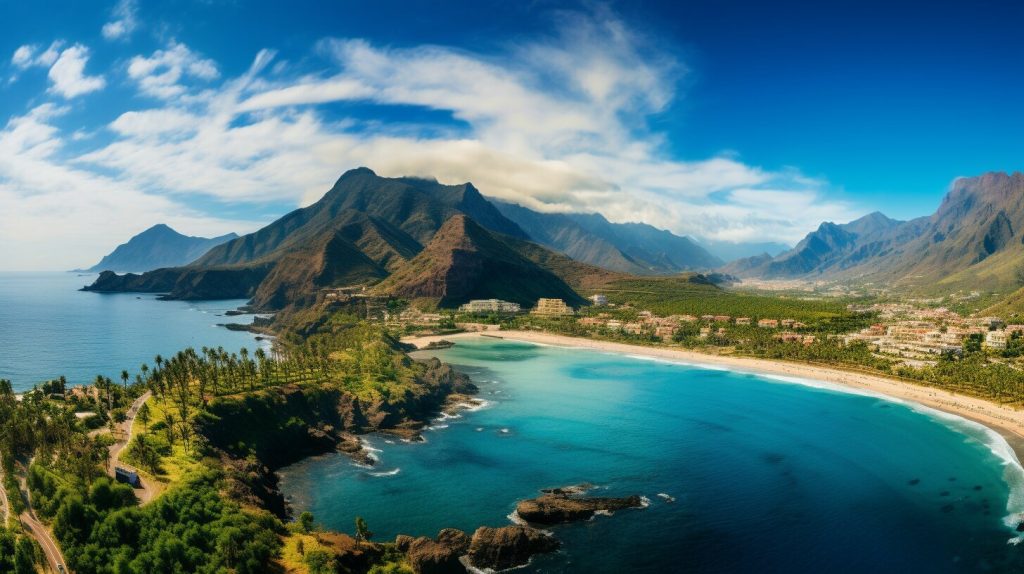
The diverse ecosystem of La Gomera is a testament to its volcanic origins, with prehistoric vegetation adding to its allure. Visitors can explore quaint towns such as Agulo, where traditional Canarian architecture blends harmoniously with stunning coastal views of the neighboring island of Tenerife.
La Gomera’s mild climate, with average temperatures around 22 degrees Celsius, makes it an ideal year-round destination. Whether you’re seeking thrilling outdoor adventures or simply a tranquil escape surrounded by nature’s beauty, La Gomera offers a warm embrace that will leave you rejuvenated and longing to return.
| Best Time to Visit | Activities |
|---|---|
| Spring (March-May) | Hiking, birdwatching, exploring Garajonay National Park |
| Summer (June-August) | Beach activities, snorkeling, diving |
| Autumn (September-November) | Whale watching, cultural festivals, exploring the island’s historic sites |
| Winter (December-February) | Milder temperatures for hiking, enjoying local cuisine, and relaxing |
Conclusion: Unveiling the Hidden Gem of La Gomera Volcano
As my journey through La Gomera Volcano comes to a close, I reflect on the hidden gem that awaits those who dare to set foot on this captivating Spanish island. La Gomera is a true paradise, nestled among the Spanish Canary Islands, offering a unique blend of ancient forests, dramatic cliffs, and picturesque volcanic coves with crystalline sands.
This enchanting island is a playground for adventurers and nature enthusiasts alike, with activities like diving and hiking allowing visitors to immerse themselves in the breathtaking landscapes. The warm climate, averaging around 22 degrees Celsius, ensures that La Gomera is a year-round destination, offering endless opportunities to explore its volcanic wonders.
La Gomera’s rich history also adds to its allure. It holds a significant connection to Christopher Columbus, who once set foot on this island during his voyage to the Indies. The Garajonay National Park, a UNESCO World Heritage Site, showcases the island’s extraordinary laurel rainforest, providing a glimpse into its prehistoric past.
But perhaps one of the most intriguing aspects of La Gomera is its whistling language, El Silbo. This fascinating communication method was used by the indigenous Guanches to traverse the deep gorges of the island, leaving behind a cultural legacy that still echoes through the canyons today.
As I bid farewell to the pristine ecosystem, the charming town of Agulo, and the awe-inspiring volcanic landscapes, I can’t help but recommend La Gomera as a hidden gem well worth exploring. Whether you seek adventure, tranquility, or a connection to nature’s extraordinary wonders, La Gomera Volcano promises an unforgettable experience for all who are willing to discover its mysterious beauty.
FAQ
Q: What activities can I do in La Gomera?
A: La Gomera offers activities such as diving and hiking, allowing you to explore its stunning volcanic landscape.
Q: What is the connection between La Gomera and Christopher Columbus?
A: Christopher Columbus visited La Gomera during his voyage to the Indies, leaving a historical mark on the island.
Q: What is the Garajonay National Park?
A: The Garajonay National Park is a UNESCO World Heritage Site, known for its unique laurel rainforest.
Q: What is El Silbo?
A: El Silbo is a fascinating whistling language used by the indigenous Guanches to communicate across deep gorges in La Gomera.
Q: What is the climate like in La Gomera?
A: La Gomera has a pleasant climate, with average temperatures around 22 degrees Celsius, making it a popular destination for hikers and adventure-seekers.